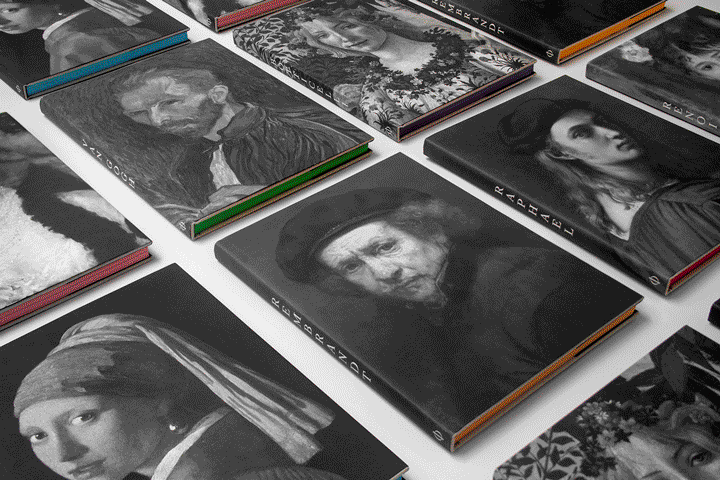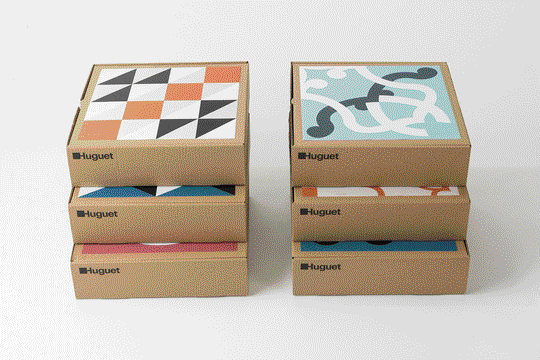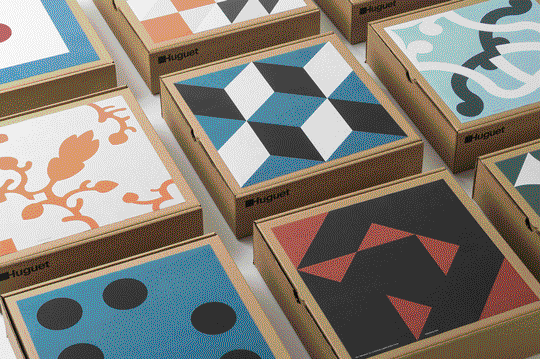Profile: Astrid Stavro
Palma de Mallorca, Spain. 2017
Michael Klein,
Born in Italy, raised in Spain and working worldwide through Atlas (the studio she co-founded with Pablo Martín) Astrid Stavro is one of today's graphic design power women — a position she generously uses to raise awareness about ethics and other important issues in design.
Let's start with a deceivingly simple question: what is design, and what is it not?
Simply put, design is not art. Design is a process carried out by people, for people. In essence design is a process or way of thinking that can be applied at any scale.
You've often been vocal on political or social issues when it comes to designers. What social role do you see design playing today, and how has that changed since last century?
The biggest change since last century has been the appearance of the internet. Marshall McLuhan’s “global village” has become the new normal. We are so used to it we no longer see it. The ability to read, spread, and react to global news quickly has enabled the breaking down of global barriers and the democratisation of knowledge. This has lead to a heightened sense of human responsibilities.
I believe that there is a moral or ethical component to design. Design can be responsible for enriching our lives or ‘doing good’ in the world. It changes the world around us and our place within it — this is why we need to understand and constantly question how it interacts with society.


In First Things First Manifesto (1964) Ken Garland said that “we are proposing a reversal of priorities in favour of the more useful and more lasting forms of communication. We hope that our society will tire of gimmick merchants, status salesmen and hidden persuaders, and that the prior call on our skills will be for worthwhile purposes.”
In the revised First Things First Manifesto (2000), Rick Poynor writes in the introduction “We have absorbed design so deeply into ourselves that we no longer recognise the myriad ways in which it prompts, cajoles, disturbs, and excites us. It’s completely natural. It’s just the way things are.” Poynor explains that for the original signatories of the Manifesto “design was in danger of forgetting its responsibility to struggle for a better life for all.”
Seventeen years later, in today’s climate of social unrest and political uncertainty, the revised First Things First Manifesto resonates with more urgency than ever: “Commercial work has always paid the bills, but many graphic designers have now let it become, in large measure, what graphic designers do (…) There are pursuits more worthy of our problem-solving skills (…) We propose a reversal of priorities in favor of more useful, lasting and democratic forms of communication — a mindshift away from product marketing and toward the exploration and production of a new kind of meaning.”
This doesn’t mean that commercial design is not meaningful or useful. Finding the right balance is complicated. But design is too important to be reduced to work that ‘pays the bills’. As communicators, creatives and thinkers we should harness the power to create work that engages in a more significant way.
A current example is the wonderful exhibition on show at the Wellcome Collection in London. Under the title “Can Graphic Design Change Your Life?”, the exhibition (curated by Lucienne Roberts and Rebecca Wright with Shamita Sharmacharja) is an intelligent reflection on the complex and pervasive influence of graphic design in healthcare. The final section of the exhibition considers how graphic design can empower people and provoke an individual to take action. Bravo.
Do you have a particular design philosophy?
Think first, design later.
How's your team structured and how does the design process look like at Atlas on a typical project?
My partner Pablo and I have our design teams, sharing the studio and administration managers. In terms of design process, we work like most graphic design studios. A good rapport and on-going dialogue with the client is essential. We start by asking questions, researching, thinking, sketching, and splitting the teams into smaller teams for specific projects. Specific ideas are then visually explored. Some of them work, others don’t. It is a process of constant experimentation and constant editing. There is no fixed structure. Every project is different, even if the design process is similar. We work until we reach the ‘aha’ moment — that normally happens when form and content blend together seamlessly creating the perfect solution.

What do you feel are the most pressing design issues for designers to tackle?
More words, less images.
Let us imagine there is one thing about the design industry —and one only— that you could change today. What would that be, and why?
The increasingly narcissistic celebrity design culture. It sends the wrong message across, especially to young, aspiring designers. The life of a professional graphic designer is pretty hard work. Difficulties and frustrations often outweigh the ‘fun’ parts. There is nothing glamorous about it.
In a previous interview, Adrian Shaughnessy stated that design criticism got zapped in the world of social media — where the discussion is brought to the lowest common denominator and forgotten the day after. What do you think about that?
I couldn’t agree more. Critical thinking is certainly not acquired by exposure to Twitter, Facebook or Instagram. Social media allow people across the world to communicate, exchange messages, share knowledge, and interact with each other regardless of the distance that separates them. On the other hand, the constant interchanging of stories, opinions, posts, and videos leads to miscommunication and misinformation. Speaking of the lowest common denominator, who would have ever imagined that the President of the United States would use Twitter the way Donald Trump does? Social networks have developed into a wasteland where incomprehension and lack of ethics make up the digital fabric of our lives. In fact, they help if not serve the rise of populism, seeding mistrust of information and each other. Informed opinions are rarely trending topics. The Internet makes more information available to more people but makes determining its validity more difficult. The sheer volume, variety, and multiple sources of information demand better skills at separating reality from fantasy, truth from propaganda.


The implosion of social media has led to a (rather scary) performance-driven society without personal boundaries. A virtual theatre where we are all audience and performers at the same time. We live in an age of profound Orwellian surveillance and narcissistic self-promotion. An era in which the public strip-tease of tastes, thoughts and opinions are rewarded with hundreds or thousands of likes and shares. The continual self-presentation based on the presence of others is a branding strategy that requires viewing oneself as a consumer product and selling this image to others.
Virtual public spaces are not places where critical thinking of any sort is welcome. On the contrary, they increasingly entrench difference and shut down meaningful change. It’s rare to hear any strong point of view expressed. At the end of the day, who doesn’t like to be liked?

Can you name a project by someone else you wish you had done, and why?
There’s many… a recent example in terms of content is Works That Work, the ‘magazine of unexpected creativity’ by Peter Bilak. I love the way in which it speaks about the impact of design in its broadest sense, showing how creativity can improve our lives. In general, I like projects that make a difference. Or that surprise me wit their wit and simplicity. I tend to dislike ‘loud’ design. I much prefer the silent gesture.
What do you think students should focus on for their future in such fast-paced times of technological development?
Using the tools at hand to solve a problem inevitably leads to similar and predictable results. Students should focus on inventing, creating or developing their own tools to solve problems with our relying on commodities. “It has been said that men are governed by their imaginations, but it would be more accurate to say that they are governed by their lack of imagination.” (Pierce Butler, 1954)
Is there something about design that you would say will never change?
Ideas were and are here to stay. As Oscar Wilde famously said: “fashion is what goes out of fashion”.